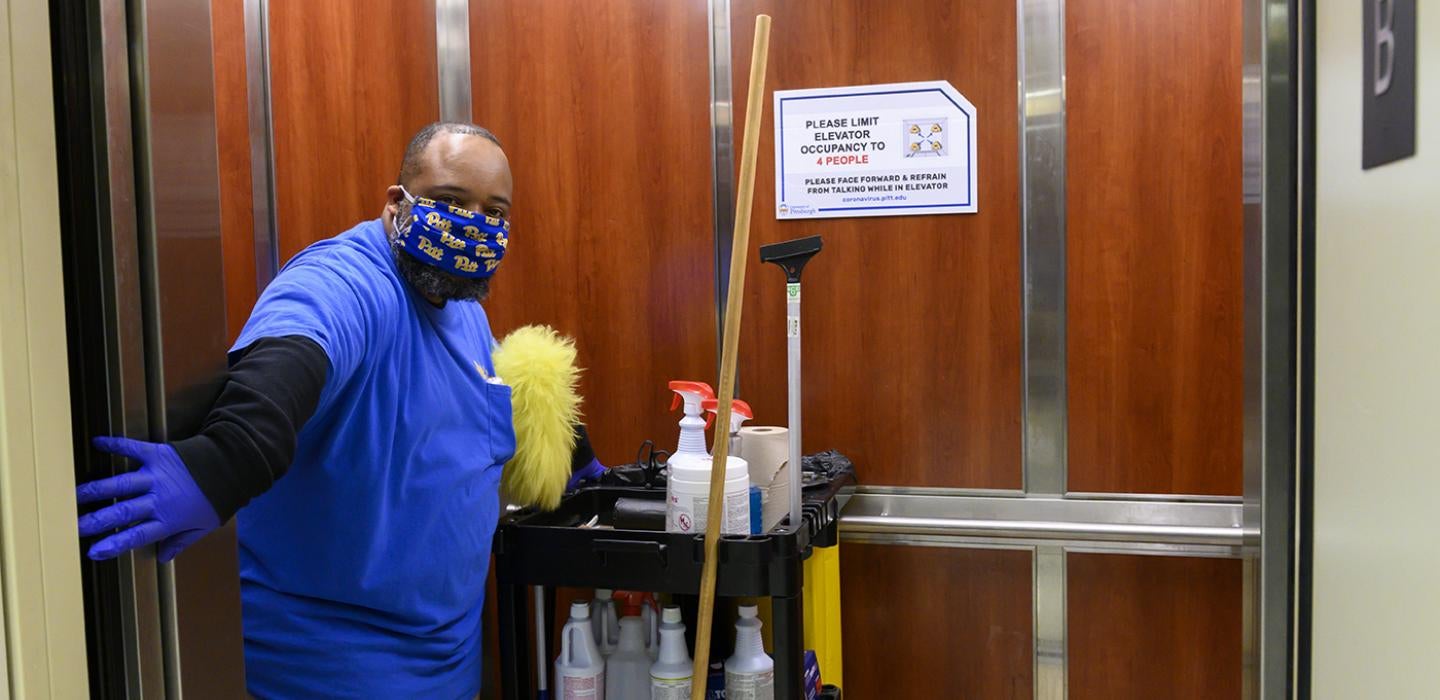
Subscribe to Pittwire Today
Get the most interesting and important stories from the University of Pittsburgh.This week, students, faculty and staff across all the University’s campuses are returning to buildings they may not have not seen, in some cases, since March 2020. For the Facilities Management and Environmental Health and Safety (EHS) teams, that has meant attending to the critical details that make a difference to community safety.
One of the most important factors in COVID-19 safety is ensuring proper ventilation and air quality in campus buildings. While indoor air quality has also risen to top of mind for the general public in the last year and a half, Scott Bernotas, associate vice chancellor of facilities management, said it has always been a priority for the University.
“In response to new guidelines, we have evaluated every HVAC system on our campuses, and over 750 systems on the Pittsburgh campus alone,” said Bernotas. “We have received high marks for health and safety, but these modifications are not one and done. These systems are continuously monitored and regularly inspected and maintained.”
The University has also engaged a mechanical contractor and consultant to quality check work done on the systems.
In addition, to further prepare spaces for increased occupancy, cleaning crews from Facilities Management inspect buildings daily and update cleaning procedures based on the latest guidance.
The Facilities Management team continues to use cleaning products approved by the U.S. Environmental Protection Agency and the Centers for Disease Control and Prevention, and EHS is collaborating with Purchasing, Pay and Travel to procure supplies for departments with faculty and staff working on campus. The stringent cleaning and sanitizing protocols put into place over the past year and a half also remain standard procedure for the team.
Plumbing systems have also been monitored and flushed when needed, allowing campus water fountains to come back into service during the summer. Safe plumbing and high water quality remain the focus of a long-term partnership between EHS and Facilities Management to support campus water safety.
“For more than twenty years, Pitt’s Environmental Health and Safety, Facilities Management and housing teams have worked together to implement and execute a robust monitoring and control program for Legionella,” said Jay Frerotte, assistant vice chancellor of EHS. “And it’s continued to evolve. In 2017, we added lead testing to our water quality program.”
This University-wide proactive prevention strategy ensures the safety of water for drinking, showering and other purposes in all buildings. The goal is to address any concern related to the presence of the Legionella bacterium, which is known to appear more frequently during periods of warm weather and in water systems that have experienced diminished usage. While this bacterium is often present in low levels in many water sources — including natural sources like lakes and rivers as well as built water systems like water heaters, fountains and reservoirs — it generally stays below levels that can cause illness in people.
To ensure our water is safe, the EHS, housing and Facilities Management teams worked with Pitt’s public health experts to develop and implement a comprehensive prevention plan including increased chlorination and heat treatment of the water supply in all buildings. This is followed by testing water samples to verify the effectiveness of these prevention steps and take further action if needed.
“This comprehensive, prevention-driven water testing strategy is illustrative of what we do in public health,” said Maureen Lichtveld, dean of the Graduate School of Public Health and professor in environmental and occupational health. “The collaboration between the EHS and facilities teams and Pitt public health experts demonstrates our University’s commitment to assure the safety of our students, staff and faculty.”
Of the overall efforts to keep campuses clean and safe, Frerotte added, “We know that safety and security are always on the front of everyone’s mind. Our goal is to give students, faculty and staff the confidence to come to campus knowing that those issues are being addressed.”


